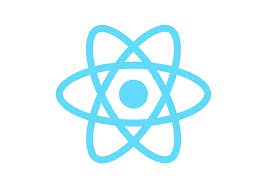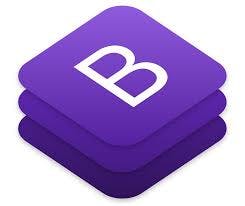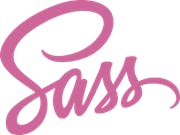Front-end development, also called client-side development simply manages the detailed and often time lush page that pops up each time you open your browser. A front-end web developer is responsible for how the site is perceived(in terms of look, design...). Now, form a mental picture of a car, imagine all the features you can easily see in a car that makes it appeal to you: a display screen, color, and paint-job, daytime running lights, the steering wheel, slick leather interior😉. And a lot of other things that make the car fun to drive and cool to look at. All the stuff you can directly touch, see, or hear? Is front end development.
The front-end of a website is the part users interact with. When you open a browser, type in your URL, and press enter, everything you see that helps you navigate around the internet, ranging from fonts, sliders, and the dropdown menu is composed of your front-end.
Core Technologies used in Front-end development
- HyperText Markup Language (HTML): It is the standard markup language for creating Web pages. It provides websites its basic structure. HTML uses tags to differentiate all the types of content on a website, contents such as "this is a heading", "this is a paragraph", "this is a link", are all labeled by HTML.
A simple HTML document.
<!DOCTYPE html>
<html>
<head>
<title>Page Title</title>
</head>
<body>
<h1>My First Heading</h1>
<p>My first paragraph.</p>
</body>
</html>
- Cascading Style Sheets (CSS): This is a style sheet language used for describing how all HTML elements must appear on the website. It is a simple way of adding style: (colors, fonts, borders, layout) to a web document, making it attractive and more appealing to the users.
- Javascript: This is a logic-based programming language that allows you to implement complex features on web pages. It is used both on the client and server-side to allow interaction on web pages. Where HTML and CSS give structure and style to web pages, Javascript engages the user.
Front-end development tools.
Web development tools are highly tested libraries that help improve workflow, making it possible to create awesome web applications with less stress. We can harness the power of these libraries to accelerate productivity.
With the number of web development tools increasing daily, finding the best software can be challenging. so, here is a list of some essential tools for frontend development to get you on the go;
- Vue.js:
 This is a framework for javascript created in 2013, used to build web interfaces and single-page applications. It is not only used for web interfaces but can be used for both desktop and mobile applications with electron framework, it is easy to pick up and integrate with other libraries or projects.
This is a framework for javascript created in 2013, used to build web interfaces and single-page applications. It is not only used for web interfaces but can be used for both desktop and mobile applications with electron framework, it is easy to pick up and integrate with other libraries or projects.
Features:
- Very small size. (the downloaded zip with the framework weighs 18 KB.)
- Virtual DOM rendering and performance.
- It’s flexible, making it suitable for cross-platform applications.
- single file components and readability.
- It combines the best features of Angular and React.
link: vuejs.org/v2/guide/installation.html
- AngularJS:
 This is a javascript framework that can be added to an HTML page with a script tag. Its main purpose is to simplify the development and testing of the applications and solve the main challenges developers find when developing single-page apps.
This is a javascript framework that can be added to an HTML page with a script tag. Its main purpose is to simplify the development and testing of the applications and solve the main challenges developers find when developing single-page apps.
Features:
- User interface with HTML.
- Active community on google.
- Routing.
- Model view controller (MVC) framework.
link: angularjs.org
- React:
 This is an open-source Javascript library that makes it painless to create interactive user interfaces. React update and render the right components in each state of your applications when your data changes. It’s maintained by Facebook and a community of individual developers and companies.
This is an open-source Javascript library that makes it painless to create interactive user interfaces. React update and render the right components in each state of your applications when your data changes. It’s maintained by Facebook and a community of individual developers and companies.
Features:
- Easy to understand and learn.
- Virtual DOM.
- Great for mobile app development.
- One-way data binding.
- Provides stable code and useful tools for developers.
link: reactjs.org
- Backbone.js:
 This is a Javascript library for building client-side apps that run in a web browser. Backbone provides different types of building blocks like models, views, routers, events, and collections for assembling client web applications. Its main goal is to help developers build single-web applications and to keep diverse parts of web applications synchronized.
This is a Javascript library for building client-side apps that run in a web browser. Backbone provides different types of building blocks like models, views, routers, events, and collections for assembling client web applications. Its main goal is to help developers build single-web applications and to keep diverse parts of web applications synchronized.
Features:
- When the model changes, Backbone.js automatically updates a developer’s HTML.
- It offers more than 100+ extensions.
- Makes codes simple and organized.
- It has separate business and UI logic.
link: backbonejs.org
- Bootstrap:
 It was introduced for the first time on August 19, 2011. Bootstrap is front-end focused, easy to use, and allows developers to build fast and responsive websites and applications. It contains CSS and JavaScript designed templates that are useful for typography, forms, navigation, and other essential components of the user interface.
It was introduced for the first time on August 19, 2011. Bootstrap is front-end focused, easy to use, and allows developers to build fast and responsive websites and applications. It contains CSS and JavaScript designed templates that are useful for typography, forms, navigation, and other essential components of the user interface.
Features:
- Responsive Utility Classes.
- Easily customizable.
- It has powerful plugins built on JQuery.
- Easy to begin with.
link: getbootstrap.com/docs/4.3/getting-started/d..
- Sass:
 Sass consists of a preprocessor scripting language that compiles into CSS. It is an abbreviation for syntactically awesome style sheets that allow developers to use variables, nested rules, mixing, and functions.
Sass consists of a preprocessor scripting language that compiles into CSS. It is an abbreviation for syntactically awesome style sheets that allow developers to use variables, nested rules, mixing, and functions.
Features:
- It helps developers with sharing design across projects.
- It offers advanced features like control directives for libraries.
- It’s compatible with CSS.
- It has multiple functions for color manipulation.
link: sass-lang.com
- Meteor:
 Sounds pretty amazing right?. It is an open-source platform for web, mobile, and desktop, used by over half a million developers around the globe to help build websites and apps faster than other frameworks. It makes shipping javascript applications simple, efficient, and scalable.
Sounds pretty amazing right?. It is an open-source platform for web, mobile, and desktop, used by over half a million developers around the globe to help build websites and apps faster than other frameworks. It makes shipping javascript applications simple, efficient, and scalable.
Features:
- Offers a MongoDB database (written entirely in JavaScript).
- Automatic updates when there are modifications in the database.
- It has several built-in features.
- Speeds development time.
link: meteor.com/install
- TypeScript:
 This is an open-source front-end scripting language, specifically designed for the development of large applications and compiles to JavaScript. It is transformed into JavaScript code via the TypeScript compiler or Babel, it is a clean, simple code that runs anywhere Javascript runs: In a browser, on Node.Js, or in your apps.
This is an open-source front-end scripting language, specifically designed for the development of large applications and compiles to JavaScript. It is transformed into JavaScript code via the TypeScript compiler or Babel, it is a clean, simple code that runs anywhere Javascript runs: In a browser, on Node.Js, or in your apps.
Features:
- TypeScript supports other JS libraries.
- It is portable across browsers, devices, and operating systems.
- It can run on any environment that JavaScript runs on.
- It supports definition files that can contain type information of existing JavaScript libraries, such as C/C++ header files.
link: typescriptlang.org/index.html#download-links
- Codekit:
 This is a mac-app for web developers. This tool provides support to build websites faster, It combines, minifies, and syntax-checks javaScript.
This is a mac-app for web developers. This tool provides support to build websites faster, It combines, minifies, and syntax-checks javaScript.
Features:
- CSS changes are incorporated without need of reloading the entire page
- Combine scripts to reduce HTTP requests
- Minify code to reduce file sizes
- Works with most languages without posing any threats.
link: codekitapp.com
- Codepen:
 This is a web development environment for front-end designers and developers. It is an online community for testing and showcasing user-created HTML, CSS, and JS code snippets.
This is a web development environment for front-end designers and developers. It is an online community for testing and showcasing user-created HTML, CSS, and JS code snippets.
Features:
- It offers to build components to use elsewhere later
- Prefill API feature allows adding links and demo pages without need to code anything
- It includes some awesome features to write CSS faster
- Allows live view and live sync
link: codepen.io
